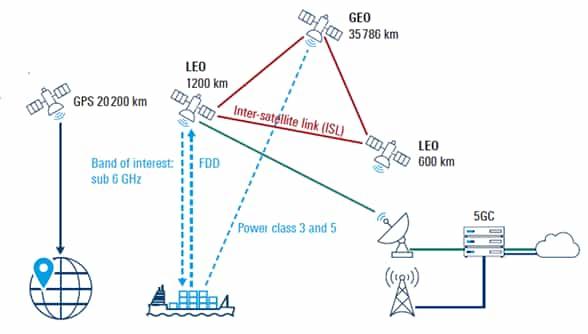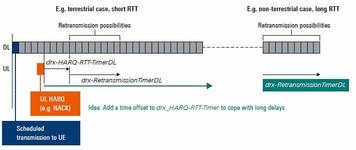Inter-Satellite Links: Enabling Space Mesh Networks
Advertisement
An inter-satellite link (ISL) is a communication link between two satellites in space - that is, a link satellite to satellite, rather than the more conventional satellite to ground (or ground‐to‐satellite) link
Role of ISL in a satellite/NTN system.
- Enables data to be relayed from one satellite to another without immediately going down to a ground station, thereby improving coverage, reducing latency and increasing the network resiliency.
- In a constellation (e.g., low Earth orbit (LEO) or medium Earth orbit (MEO)), ISLs allow satellites to route traffic across the space segment before it reaches a gateway or ground station.
- For a non-terrestrial network (NTN) scenario, ISLs can be used to backhaul or relay data across space to ground, to other satellites, or eventually to the terrestrial network.
- They help create a “mesh” or “space backbone” of satellites.
 Image Courtesy : Rohde & Schwarz
Image Courtesy : Rohde & Schwarz
Frequencies or Bands used in ISL
Following table mentions different frequency bands and their usage in Inter-Satellite Link(ISL).
| Band | Frequency Range & remarks |
|---|---|
| Ka-Band/K-band | 26.5 to 40 GHz, Used for high capacity links |
| Ku Band | 12 to 18 GHz |
| S-band, X-band, C-band | 2-4 GHz in S-band, 8-12 GHz in X-band, 4 to 8 GHz in C-band |
| Specific FSS bands for ISL | 11.7-12.7 GHz, 18.1-18.6 GHz , 18.8 - 20.2 GHz, 27.5-30 GHz are being analyzed to be used for ISL usage in space to space communication. |
| millimeter wave/Optical frequencies | Some experimental ISLs use very high frequencies (mm-wave) or even optical/laser links. For example a project for ISL at ~60 GHz. |
Advertisement
 RF
RF



